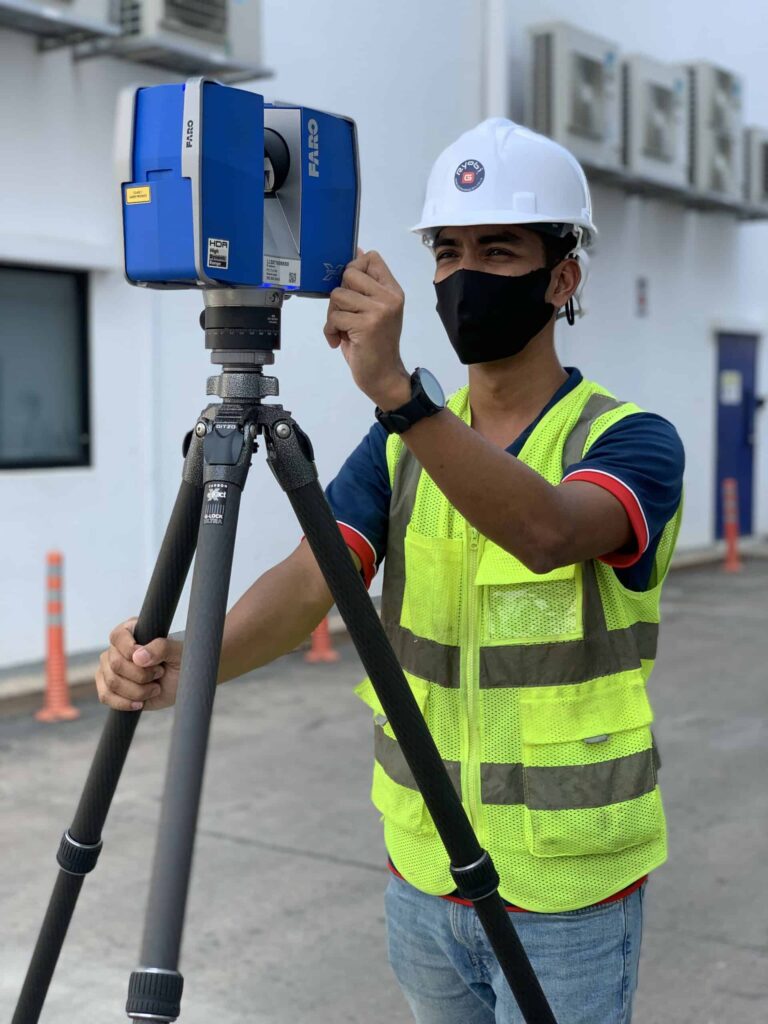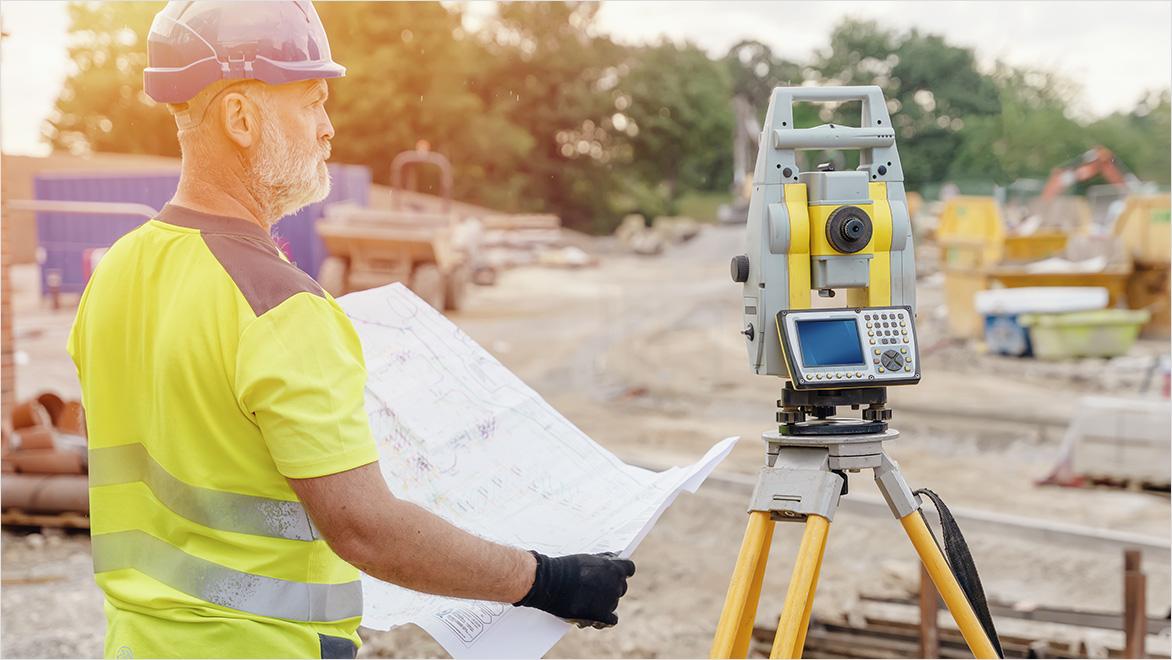Why Is 3D Scanning Critical for Contemporary Designers
Wiki Article
Discovering the Applications of 3D Laser Scanning in Archaeology and Cultural Heritage Conservation
The assimilation of 3D laser scanning modern technology in archaeology and social heritage conservation notes a substantial advancement in how archaeological sites and artifacts are recorded and evaluated. This non-invasive technique gives specific spatial information, disclosing elaborate details that were previously challenging to capture. As the applications of this technology remain to progress, various implications for education, preservation, and documents arise, inviting further expedition into its transformative effect on the area.Recognizing 3D Laser Scanning Innovation
3D laser scanning modern technology has actually reinvented the field of archaeology by giving specific and comprehensive spatial information. This advanced modern technology utilizes laser beams to record countless data points from an item or site, developing an extremely exact three-dimensional representation (3D Scanning). The resulting point clouds can disclose elaborate information of historical sites, structures, and artefacts that might be unseen to the naked eyeUsing this innovation, excavators can document the specific dimensions, forms, and positions of items with extraordinary accuracy. This approach minimizes the danger of human error and gets rid of the demand for substantial manual measurements. The information gathered can be assessed and shared easily, assisting in collaboration amongst researchers. By integrating 3D laser scanning with GIS and various other electronic devices, excavators improve their capability to imagine and translate historic contexts, leading to deeper understandings into ancient societies and settings.
Enhancing Archaeological Paperwork
3D laser scanning substantially enhances archaeological paperwork via its capacity to develop accurate site maps. This technology helps with in-depth artefact evaluation, giving understandings that traditional methods may neglect. In addition, it ensures the preservation of contextual data, which is necessary for recognizing the partnerships within historical sites.Exact Website Mapping
While standard mapping techniques commonly battle with recording the complex information of historical sites, advanced laser scanning technology supplies a revolutionary approach to exact website mapping. This technique allows archaeologists to create very described and exact three-dimensional representations of sites, showcasing topographical variants and architectural functions with amazing fidelity. The capacity to record countless data factors in a matter of minutes allows for thorough documents, which can be conveniently updated and shared amongst scientists. Furthermore, laser scanning helps with the dimension of complex geometries that would be hard to evaluate making use of conventional devices. Therefore, this modern technology enhances the precision of website maps, contributing considerably to the conservation and understanding of cultural heritage sources.Detailed Artifact Evaluation
Laser scanning modern technology substantially improves the evaluation of archaeological artifacts, providing scientists with unprecedented detail and accuracy. This approach captures intricate surface area textures, measurements, and features that conventional paperwork methods may ignore. By generating high-resolution 3D designs, scholars can very closely check out artifacts without the risk of damages integral in physical handling. This precision enables much better relative studies, allowing specialists to determine production techniques, stylistic variants, and possible social importance. The capability to control and envision information in three dimensions assists in a much deeper understanding of artefact functionality and usage. On the whole, laser scanning fosters a more complete strategy to historical documents, making certain that important information about artefacts is maintained for future research study and education and learning.Conservation of Contextual Information
Protecting contextual data is important for boosting historical documents, as it ensures that searchings for are understood within their original environmental and social structures. 3D laser scanning modern technology greatly adds to this conservation effort by catching comprehensive spatial relationships among artefacts, structures, and their environments. By generating precise 3D versions, excavators can document the exact locations and orientations of things sitting, assisting in a detailed understanding of their context. This modern technology allows researchers to revisit and assess websites long after excavation, maintaining the integrity of contextual details. On top of that, digital documents produced through scanning can be shared around the world, cultivating collective research and public engagement. Inevitably, protecting contextual data via 3D laser scanning enhances archaeological stories and promotes a much more extensive appreciation of social heritage.Preservation of Cultural Heritage Sites
As advancements in innovation remain to evolve, the conservation of cultural heritage websites has actually ended up being increasingly reliant on cutting-edge methods such as 3D laser scanning. This modern technology enables the comprehensive paperwork of artefacts, landscapes, and structures, catching their accurate measurements and spatial relationships in a non-invasive fashion. By creating high-resolution 3D designs, scientists can keep an eye on and assess damage patterns, making it possible for proactive conservation methods.In addition, 3D laser scanning facilitates the sharing of in-depth website data with the international community, promoting partnership amongst historians, guardians, and excavators. These designs offer as indispensable sources for education and learning and public interaction, raising awareness of cultural heritage issues. The digital records created can secure versus see this here loss due to environmental aspects, vandalism, or overlook. In general, 3D laser scanning represents a transformative technique to the conservation of cultural heritage, making sure that these sites can be studied and appreciated by future generations.

Restoration and Repair Initiatives
The comprehensive documentation accomplished with 3D laser scanning plays a considerable duty in remediation and repair efforts within archaeology. This modern technology provides exact measurements and high-resolution imagery, permitting precise electronic versions of frameworks and artefacts. These versions serve as essential references throughout remediation procedures, enabling excavators to envision the original layout and make educated choices about products and techniques required for repair.Furthermore, 3D laser scanning assists in the repair of damaged or shed components by producing thorough replicas. This process help in guaranteeing have a peek at these guys that restorations keep historic stability while additionally permitting cutting-edge strategies to recover sites. The ability to analyze wear patterns and structural weaknesses through checked information boosts understanding of a site's historical context and its use with time. Consequently, 3D laser scanning not just maintains the physical facets of social heritage but likewise enhances the narrative of background, assisting future repair undertakings.
Educational and Research Opportunities
The assimilation of 3D laser scanning in archaeology opens significant educational and research chances. Academic partnerships can improve the understanding of ancient websites, while specialized training workshops furnish professionals with essential abilities for utilizing this technology. With each other, these efforts foster a richer involvement with historical methods and approaches.Academic Collaborations in Archaeology
Joint initiatives in archaeology have come to be progressively essential for progressing both academic and research chances. By fostering collaborations among colleges, research establishments, and cultural heritage companies, these collaborations promote the exchange of understanding and sources, enhancing the top quality of archaeological researches. Joint jobs often take advantage of varied experience, permitting cutting-edge approaches and thorough evaluations, especially in the application of technologies like 3D laser scanning. Such partnerships also promote interdisciplinary approaches, engaging fields such as background, conservation, and geography scientific research. Additionally, academic partnerships often result in the advancement of new educational programs and training programs, preparing the following generation of excavators to effectively use sophisticated technologies in their work. Eventually, these partnerships add to the conservation and understanding of social heritage.Training Workshops for Experts
Educating workshops for professionals in archaeology are increasingly vital for boosting abilities in the application of innovative modern technologies such as 3D laser scanning. These workshops give participants with hands-on experience in using advanced equipment and software, cultivating a much deeper understanding of data capture and analysis procedures. Experts can discover to create exact electronic designs of archaeological websites, which markedly help in paperwork and conservation efforts. Additionally, these training sessions commonly consist of discussions on best techniques and study, advertising expertise exchange among participants. By buying continual education, professionals can remain updated on evolving modern technologies, inevitably improving the performance of their research study and cultural heritage conservation efforts. This dedication to skill enhancement is essential for progressing the field of archaeology.Future Patterns in 3D Laser Scanning for Archaeology
As developments in modern technology continue to improve various areas, the future of 3D laser scanning in archaeology promises to improve both the precision and efficiency of website documentation and evaluation. Arising fads suggest an expanding combination of fabricated intelligence and artificial intelligence, facilitating automated data handling and analysis. This evolution will certainly permit archaeologists to assess complex datasets a lot more swiftly, leading to faster visit insights right into historical contexts.The assimilation of drone technology with 3D laser scanning is likely to broaden, making it possible for thorough aerial surveys of archaeological sites that are difficult to gain access to. The boosting price of scanning tools will certainly equalize accessibility, empowering smaller organizations and independent researchers to use these devices properly. In addition, advancements in virtual fact and augmented reality will enable immersive experiences for public engagement and education, making historical searchings for more interactive and obtainable. These fads jointly indicate a transformative future for archaeology, improving preservation efforts and expanding the technique's outreach.
Frequently Asked Concerns
Just How Much Does 3D Laser Scanning Tools Price?

What Are the Limitations of 3D Laser Scanning?
The restrictions of 3D laser scanning consist of high prices, potential information handling obstacles, sensitivity to environmental conditions, and trouble recording intricate details in intricate surfaces, which can influence the accuracy and completeness of scanned representations. (3D Scanning)
Can 3D Laser Scanning Be Used Underwater?
Yes, 3D laser scanning can be used underwater, but it needs customized tools and methods to get over difficulties such as water distortion and limited exposure. Effective applications have been demonstrated in aquatic archaeology and undersea studies.How Long Does a Scanning Job Generally Take?
A scanning task typically takes anywhere from a few days to numerous weeks, relying on the intricacy and dimension of the area being checked, together with the prep work and post-processing demands entailed in the project.Exist Details Software Requirements for Processing 3D Checks?
Yes, certain software program demands for processing 3D scans include programs qualified of managing huge factor clouds, such as Autodesk ReCap, Cyclone, or MeshLab. These tools facilitate evaluation, visualization, and integration into numerous applications effectively.The integration of 3D laser scanning technology in archaeology and social heritage preservation marks a substantial development in how historical sites and artefacts are documented and analyzed. 3D laser scanning innovation has transformed the area of archaeology by providing thorough and exact spatial information. As developments in modern technology continue to progress, the preservation of social heritage sites has become progressively dependent on cutting-edge methods such as 3D laser scanning. As improvements in modern technology proceed to improve various fields, the future of 3D laser scanning in archaeology promises to improve both the precision and effectiveness of website documents and evaluation. The assimilation of drone technology with 3D laser scanning is likely to expand, making it possible for comprehensive aerial surveys of archaeological sites that are challenging to gain access to.
Report this wiki page